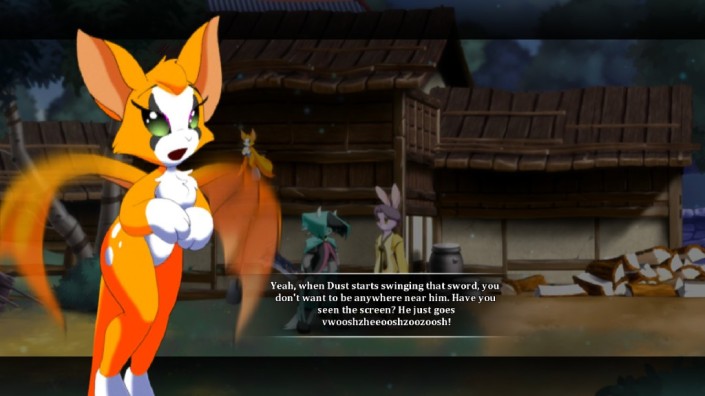Elysian Tail
Dust: An Elysian Tail review
Back in the days of early generation consoles, the 2D platformer was the pinnacle of technology and the staple design for many iconic games – think Sonic, Golden Axe, Earthworm Jim! With today’s modern graphics and technological developments, the humble 2D platformer is more often than not swept under the rug like an easy to conceal bag of incriminating evidence, save for prevalent series such as Mario. Dust: An Elysian Tail (yes, ‘tail’, not ‘tale’) is a game that revamps the 2D platformer dynamic and thrusts it salaciously into the modern day. It falls under the umbrellaing category of Metroidvania (or Castleroid) – action/adventure with RPG elements. This is a game done right.
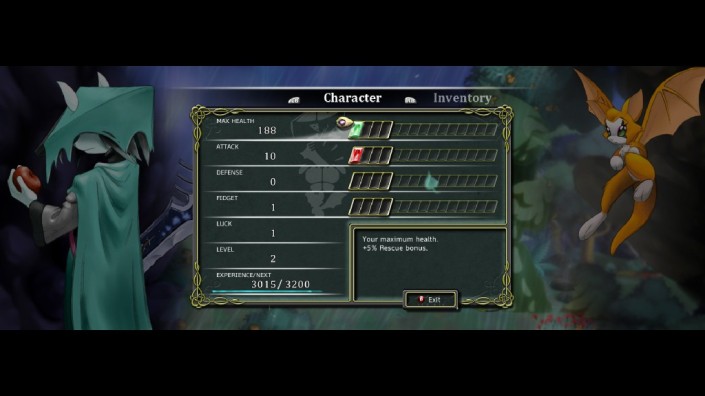 When I first booted up Dust on the ol’ PC, I thought that I’d wandered into some sort of My Little Pony/furry fan’s wet dream. This was largely due to all of the characters being anthropomorphic animals, drawn in an anime fashion. Fortunately, as I began to play, my initial worries were quickly cast aside like yesterday’s ham.
When I first booted up Dust on the ol’ PC, I thought that I’d wandered into some sort of My Little Pony/furry fan’s wet dream. This was largely due to all of the characters being anthropomorphic animals, drawn in an anime fashion. Fortunately, as I began to play, my initial worries were quickly cast aside like yesterday’s ham.
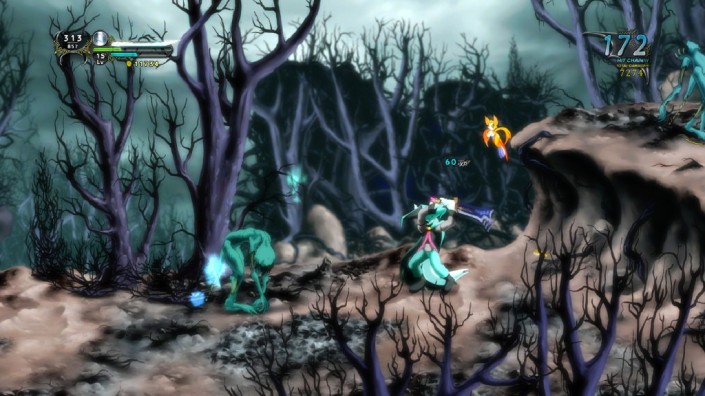 Playing Dust feels a bit like you’re watching an anime film. The cutscenes look remarkably like a 90s Studio Ghibli film, which is a compliment when (aside from the voice acting, soundtrack and a bit of the writing), Dust was developed by ONE PERSON. According to various online sources (Wikipedia), Dust’s lone developer, Dean Dodrill, is a self-taught illustrator and animator. It’s outstanding, then, to think that this one person not only developed this entire game, but also drew it. Anime is one of those genres that retains a certain magic when it’s hand drawn, and Dust definitely brings this magic to life. Both the character models and settings are truly beautiful and well imagined. The world feels alive, buzzing, and full of fleshed out characters.
Playing Dust feels a bit like you’re watching an anime film. The cutscenes look remarkably like a 90s Studio Ghibli film, which is a compliment when (aside from the voice acting, soundtrack and a bit of the writing), Dust was developed by ONE PERSON. According to various online sources (Wikipedia), Dust’s lone developer, Dean Dodrill, is a self-taught illustrator and animator. It’s outstanding, then, to think that this one person not only developed this entire game, but also drew it. Anime is one of those genres that retains a certain magic when it’s hand drawn, and Dust definitely brings this magic to life. Both the character models and settings are truly beautiful and well imagined. The world feels alive, buzzing, and full of fleshed out characters.
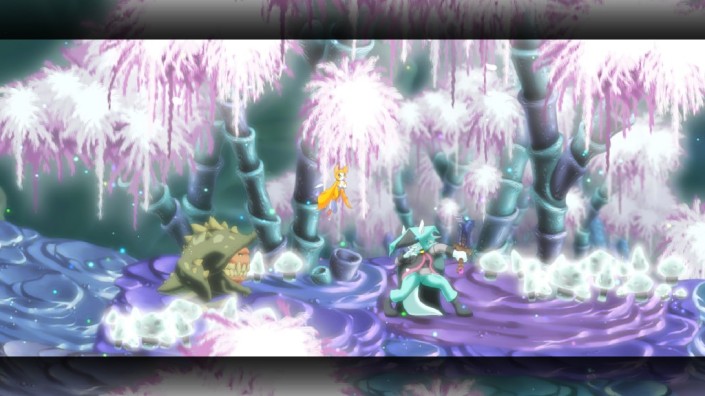 Indeed, one of the game’s best features is its design. Character costumes are pretty incredible. The protagonist – the eponymous Dust – wears an iconic sedge hat, instantly setting him apart from other characters, who tend to wear more traditional casual Korean gear. He also holds his sword with his backhand, so you know he’s cool. Each character feels unique, with the exception of some enemies – but even they are palette swapped to add a bit of variety. The backdrops across the game, along with the well-designed levels, also follow this anime-esque model, and as a result create the rich, varied explorable world that Dust: An Elysian Tail is set in.
Indeed, one of the game’s best features is its design. Character costumes are pretty incredible. The protagonist – the eponymous Dust – wears an iconic sedge hat, instantly setting him apart from other characters, who tend to wear more traditional casual Korean gear. He also holds his sword with his backhand, so you know he’s cool. Each character feels unique, with the exception of some enemies – but even they are palette swapped to add a bit of variety. The backdrops across the game, along with the well-designed levels, also follow this anime-esque model, and as a result create the rich, varied explorable world that Dust: An Elysian Tail is set in.
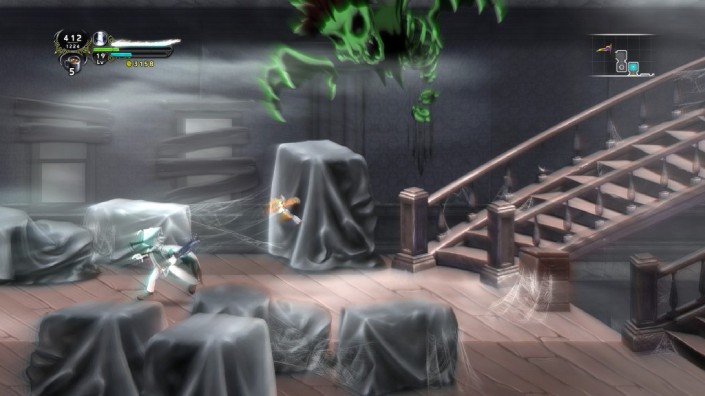 The game opens with Dust awakening one day in a pretty little grove, lost and confused. He is quickly greeted by in-game companion Fidget (a kind of cat/bat/weasel thing, who, although very annoying, is awfully endearing…like a Tara Strong character) and a legendary talking sword, Ahrah. Together, they must thwart the malicious General Gaius, who is committing mass genocide across the country, and find out who Dust really is. The story is quite compelling, though not the game’s strongest point. It’s interesting, but predictable, and quite typically anime. Again, it reminded me of a Studio Ghibli film – mixing that wondrous feeling of magic and humour with a slightly darker, mature undertone. It touches on subjects such as war, morality and redemption, but it won’t leave you wanting to discuss the plot with your fellow comrades around the watercooler at work on Monday.
The game opens with Dust awakening one day in a pretty little grove, lost and confused. He is quickly greeted by in-game companion Fidget (a kind of cat/bat/weasel thing, who, although very annoying, is awfully endearing…like a Tara Strong character) and a legendary talking sword, Ahrah. Together, they must thwart the malicious General Gaius, who is committing mass genocide across the country, and find out who Dust really is. The story is quite compelling, though not the game’s strongest point. It’s interesting, but predictable, and quite typically anime. Again, it reminded me of a Studio Ghibli film – mixing that wondrous feeling of magic and humour with a slightly darker, mature undertone. It touches on subjects such as war, morality and redemption, but it won’t leave you wanting to discuss the plot with your fellow comrades around the watercooler at work on Monday.
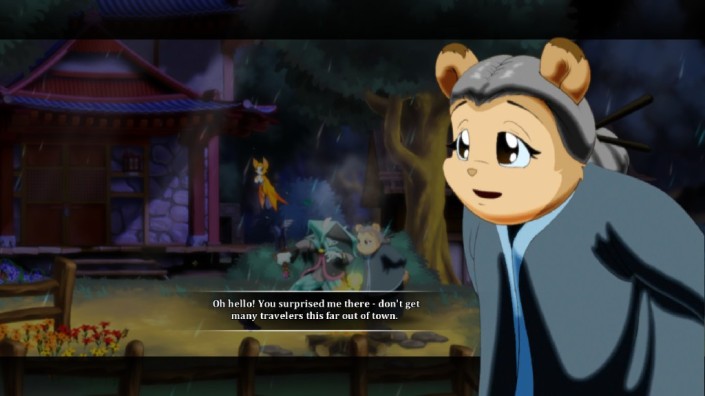 As mentioned, the level design is another of the game’s highlights. Each explorable area is divided into several ‘rooms’, for lack of a better word. These rooms fit together like a jigsaw, clearly indicating which side access points are on. This means that you won’t just be travelling right all the time, as with games of yore, but also up, down and left. This, along with the use of height levels, secret areas and explodable walls, adds great variety to each level – nothing feels like it has been copy and pasted.
As mentioned, the level design is another of the game’s highlights. Each explorable area is divided into several ‘rooms’, for lack of a better word. These rooms fit together like a jigsaw, clearly indicating which side access points are on. This means that you won’t just be travelling right all the time, as with games of yore, but also up, down and left. This, along with the use of height levels, secret areas and explodable walls, adds great variety to each level – nothing feels like it has been copy and pasted.
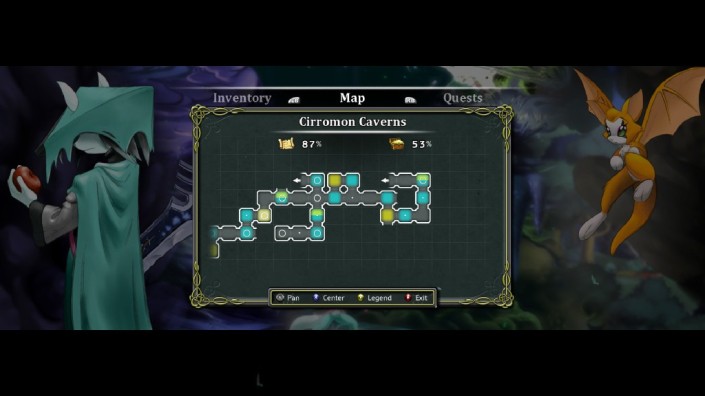 Throughout the game you can also collect keys to unlock chests, which contain money and food. Food is used for healz, and ranges from a modest lasagne, to a slice of birthday cake, and even some Korean inspired dishes. Keys also unlock cages that contain a variety of ‘friends’. Purely Easter eggs, these ‘friends’ are characters from other indie game such as Super Meat Boy or Bastion. You can go and chill with them in the Sanctuary. Which is a nice way to take a break from killing things.
Throughout the game you can also collect keys to unlock chests, which contain money and food. Food is used for healz, and ranges from a modest lasagne, to a slice of birthday cake, and even some Korean inspired dishes. Keys also unlock cages that contain a variety of ‘friends’. Purely Easter eggs, these ‘friends’ are characters from other indie game such as Super Meat Boy or Bastion. You can go and chill with them in the Sanctuary. Which is a nice way to take a break from killing things.
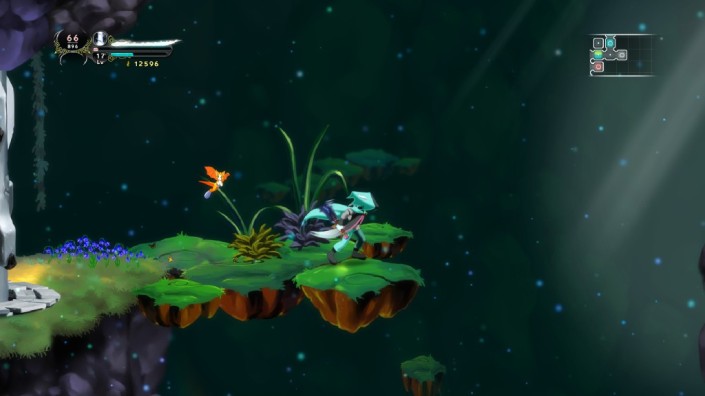
Dust’s combat utilises both hack ‘n’ slash and RPG elements. Fidget can use her magic to help inhibit enemies, whilst Dust attacks with the standard two button combat controls, which you can mix up to perform a handful of combos. There are only like….three, but chaining multiple attacks together, along with adding Fidget’s magic to the mix, can create a lovely dance of destruction. The flow of combat has been quite masterfully tailored, with fluid battle animations and responsive controls that you can jump, dart and dodge your way around the battlefield seamlessly. The RPG elements come into play in the form of experience, which can be used to buff Dust up and increase the damage that Fidget deals. The levelling scale is a little off, however. When you first enter an area, combat is…no exactly difficult, but slightly challenging – you have to keep on your toesies. But once you level up a couple o’ times, you obliterate anything in your path. This includes bosses. There are only four boss fights, with a handful of mini-bosses, but none really pose a threat. The last boss, who requires you to fight him four times, is the most challenging, but even then, on normal difficulty, he wasn’t a problem at all. I only died a couple of times throughout the game, and that was largely down to my own hubris when fighting a bazillion enemies at once. I have no idea what the fighting is like on a higher difficulty, but with levelling up and the various augments that you can equip to up your attack, it’s all pretty easy. Speaking of, I was disappointed that the game doesn’t feature a New Game Plus option once you complete it. Seems like it would be a good way to offer some replay value to a game that has none. Also, if you try and exit an area whilst you’re still in a fight, a little notification pops up which sounds an awful lot like the old Windows Messenger sound. That’s pretty irrelevant to this review, but I thought I should mention it. Sorry.
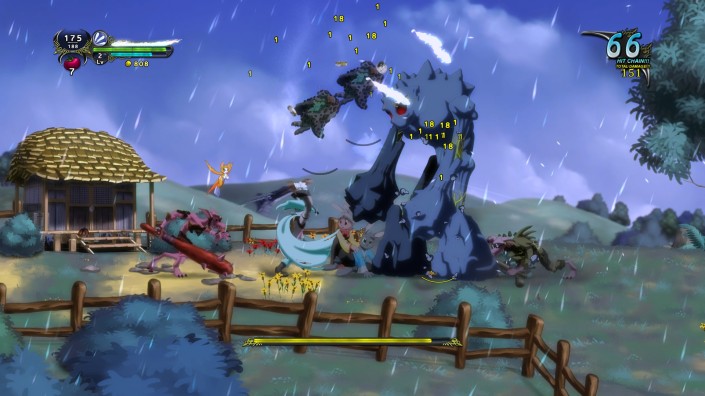 TO CONCLUDE. Dust: An Elysian Tail is a good game. Not amazing, but definitely worth playing if you can cough up the dollar. I completed the game with 111% out of a possible 117% (I couldn’t be bothered to do the challenge maps) in about 8 hours or so, so add on a couple of hours for level grinding and completing the previously mentioned challenge maps, you’re looking at a lifespan of about 10 hours (IGN reckons 20 wut). It’s beautifully designed, and amazing when you think that the majority of it is one person’s work. The voice acting is pretty swish too, and you could be mistaken for thinking that you’re watching an anime film (fun fact, the game actually started off as a film called Elysian Tail). There are also plans for a PS4 version to come out soon, which is gonna look sweeeet. So yeah. If you like fun, quirky, 2D hack ‘n’ slashes, then definitely go and check out Dust. If not, well, Shadows of Mordor is out soon so…
TO CONCLUDE. Dust: An Elysian Tail is a good game. Not amazing, but definitely worth playing if you can cough up the dollar. I completed the game with 111% out of a possible 117% (I couldn’t be bothered to do the challenge maps) in about 8 hours or so, so add on a couple of hours for level grinding and completing the previously mentioned challenge maps, you’re looking at a lifespan of about 10 hours (IGN reckons 20 wut). It’s beautifully designed, and amazing when you think that the majority of it is one person’s work. The voice acting is pretty swish too, and you could be mistaken for thinking that you’re watching an anime film (fun fact, the game actually started off as a film called Elysian Tail). There are also plans for a PS4 version to come out soon, which is gonna look sweeeet. So yeah. If you like fun, quirky, 2D hack ‘n’ slashes, then definitely go and check out Dust. If not, well, Shadows of Mordor is out soon so…
